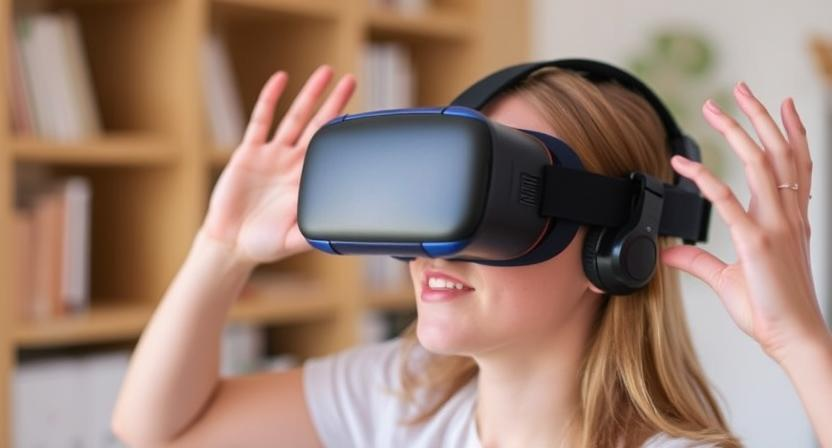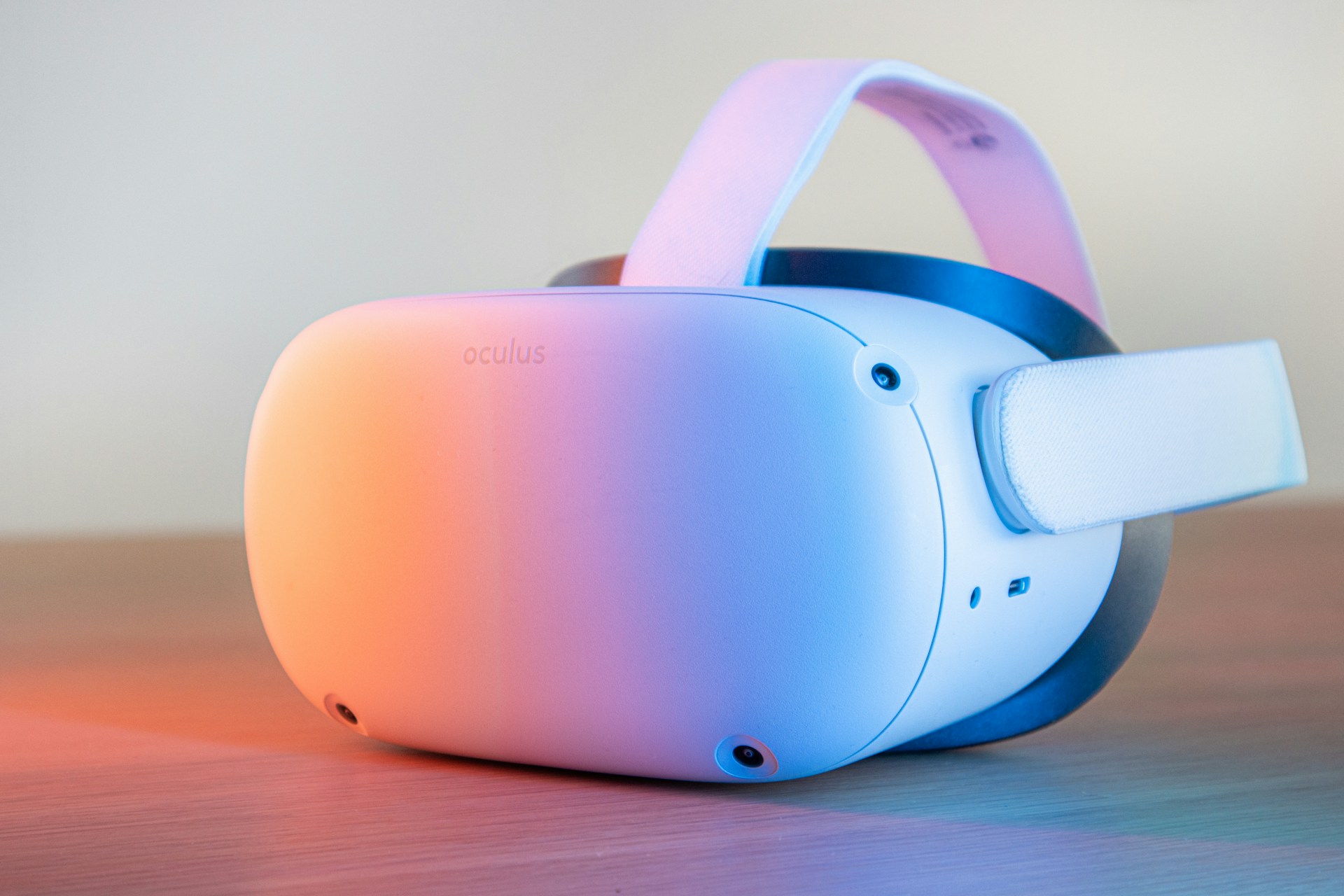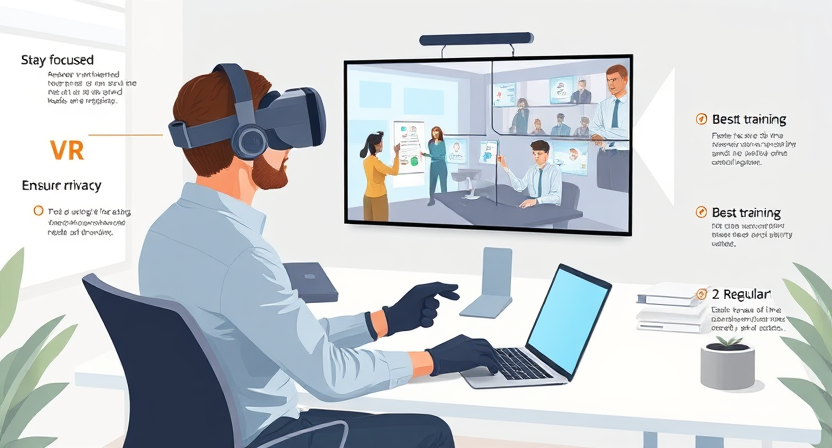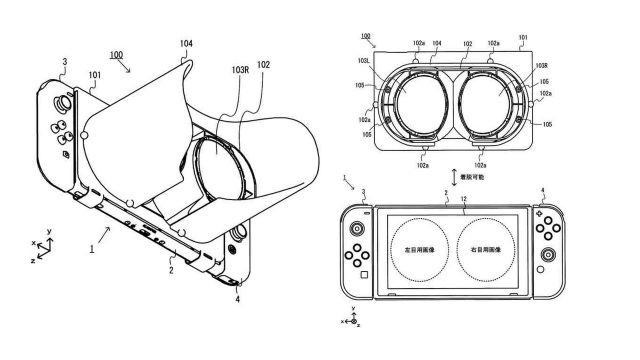How Virtual Reality Works

Virtual reality (VR) technology creates a simulated environment that users can interact with through the use of specialized equipment, such as a VR headset. By leveraging a combination of hardware and software components, VR systems aim to immerse users in a digital world that can be explored and manipulated in real-time. The key principles behind VR involve tracking the user’s movements and adjusting the display to reflect those actions, giving the sensation of being present in an alternate reality.
To achieve this level of immersion, VR headsets typically consist of a high-resolution display to provide crisp visuals, sensors for tracking head movements, and audio outputs for spatial sound. The headset works in tandem with controllers or other input devices to enable users to engage with the virtual environment, allowing for a more interactive and engaging experience. As users move their heads or interact with the virtual world, the system responds by updating the display in real-time to maintain the illusion of presence within the simulated environment.
Types of Virtual Reality Headsets
When it comes to virtual reality headsets, there are mainly three types: tethered, standalone, and mobile. Tethered VR headsets are connected to a powerful PC or gaming console, providing high-end graphics and immersive experiences. Standalone headsets, on the other hand, have all the necessary components built-in, offering more freedom of movement without the need for external devices. Mobile VR headsets use smartphones to power the virtual reality experience, making them portable and accessible for on-the-go use.
Each type of VR headset has its own strengths and limitations, catering to different preferences and budgets. Tethered headsets are ideal for hardcore gamers and tech enthusiasts who prioritize top-notch performance, while standalone headsets are perfect for casual users looking for convenience and ease of use. Mobile headsets are great for beginners or individuals on a budget, providing a cost-effective entry point into the world of virtual reality.
Considerations Before Buying a VR Headset
When considering purchasing a VR headset, it is crucial to think about the compatibility with your existing devices. Some VR headsets may be specifically designed to work with certain consoles or PCs, so make sure your equipment meets the necessary requirements. Additionally, take note of the display resolution and refresh rates offered by the headset, as these factors greatly impact the overall visual experience in virtual reality environments.
Another important consideration is the field of view provided by the VR headset. A wider field of view can enhance immersion and make the virtual world feel more realistic. Additionally, consider the tracking capabilities and controllers of the headset, as these play a significant role in how you interact with the virtual environment. Comfort and weight are also key factors to take into account, as you may be wearing the headset for extended periods of time.
Budget-Friendly VR Headsets for Beginners
For beginners looking to explore virtual reality without breaking the bank, there are several budget-friendly VR headset options available in the market. These entry-level headsets typically offer basic features and functionality, making them an affordable entry point for those new to the VR experience.
Some budget-friendly VR headsets come as standalone devices, eliminating the need for additional equipment or a high-powered gaming PC. These standalone headsets are easy to set up and use, providing a convenient and cost-effective way to dive into the world of virtual reality. While they may not offer the same level of performance or immersion as their higher-end counterparts, budget-friendly VR headsets still provide an exciting introduction to the capabilities of VR technology.
High-End VR Headsets for Enthusiasts
When it comes to high-end virtual reality (VR) headsets targeted towards enthusiasts, there are several top-of-the-line options available in the market that offer unparalleled immersion and performance. These premium VR headsets are designed to cater to the needs and demands of advanced users who seek cutting-edge technology and the ultimate experience in virtual reality.
High-end VR headsets for enthusiasts typically feature the latest advancements in display technology, offering stunning visuals with high resolutions and fast refresh rates. Moreover, these devices often boast wide field of view, precise tracking capabilities, and advanced controllers, allowing users to interact seamlessly with the virtual environment. Enthusiasts who prioritize top-tier quality and innovative features in their VR experiences may find that investing in a high-end headset provides them with the immersive and realistic simulations they crave.
Compatibility with Devices

For a seamless virtual reality experience, it is crucial to ensure that your chosen VR headset is compatible with your devices. Most VR headsets are designed to work with specific operating systems and platforms, so be sure to check whether your headset supports your computer, gaming console, or smartphone before making a purchase. Compatibility issues may arise if your devices do not meet the minimum requirements, resulting in a less-than-optimal VR experience.
Additionally, consider the connectivity options of the VR headset in relation to your devices. Some headsets require specific cables or adapters to connect to certain devices, while others offer wireless connectivity for added convenience. Understanding how your devices can connect to the VR headset will contribute to a smooth setup process and ensure that you can enjoy VR content without any technical difficulties.
Display Resolution and Refresh Rates
When considering a virtual reality headset, display resolution and refresh rates play a crucial role in the overall visual experience. The display resolution refers to the number of pixels available for viewing images, with higher resolutions resulting in sharper and more detailed visuals. Opting for a headset with a higher display resolution can significantly enhance the realism and immersion of the virtual environment you are exploring.
Refresh rates, on the other hand, indicate how many times per second the display updates the images. A higher refresh rate can reduce motion sickness and make the visuals smoother and more lifelike. It is advisable to look for VR headsets with refresh rates of at least 90Hz or higher to ensure a comfortable and enjoyable immersive experience without any lag or motion blur.
Field of View
Field of view refers to the extent of the observable world that can be seen at any given moment through a virtual reality headset. A wider field of view provides a more immersive experience by allowing users to see more of their virtual surroundings without noticeable boundaries or distortions.
In the world of virtual reality, field of view is a crucial factor in determining the level of realism and engagement that users can experience. A larger field of view can make users feel like they are truly inside the virtual world, enhancing their sense of presence and immersion. On the other hand, a narrow field of view may result in a more limited and less realistic experience, making it feel like looking through a window rather than being truly transported to another reality.
Tracking and Controllers
Proper tracking and responsive controllers are essential components of a seamless virtual reality experience. Tracking refers to the system that monitors the position and movement of the user within the virtual space. It ensures that your movements are accurately represented in the virtual world, enhancing immersion and reducing motion sickness. Good tracking also plays a crucial role in the overall stability and responsiveness of the VR environment.
On the other hand, controllers act as the bridge between the virtual world and the real world, allowing users to interact with the digital environment. They come in various forms, from handheld devices with buttons and triggers to more advanced options with haptic feedback and motion sensors. Well-designed controllers not only enhance the gameplay but also make navigation and interaction more intuitive and engaging for users.
Comfort and Weight
When it comes to virtual reality headsets, comfort and weight are paramount. A headset that feels burdensome or causes discomfort can quickly take away from the immersive experience. Ensuring that the headset is well-balanced and appropriately cushioned can make a significant difference in long gaming sessions or extended use for other applications.
Design elements such as head strap adjustability, padding around the eyes and head, and weight distribution play crucial roles in enhancing the comfort level. Additionally, the overall weight of the headset can impact how it feels during use. A lightweight design can reduce strain on the user’s neck and head, making it more comfortable to wear for extended periods. Manufacturers are continuously striving to improve the comfort and weight of VR headsets to provide users with an enjoyable and ergonomic experience.
Adjustability and Fit

For optimal comfort and immersive experience, having a VR headset that fits well and is adjustable is crucial. The ability to customize the fit ensures that the headset stays securely in place during your virtual adventures, preventing distractions and discomfort. Look for headsets with adjustable straps, cushioned padding, and adaptable designs to cater to various head sizes and shapes.
A well-fitted VR headset not only enhances the overall experience but also reduces the risk of motion sickness and discomfort. Make sure to test the adjustability of the headset before purchasing to ensure a snug fit without being too tight or loose. Additionally, consider the weight distribution of the headset to avoid strain on your neck and head during prolonged use. Prioritizing adjustability and fit will significantly enhance your VR enjoyment and immersion.
Wired vs. Wireless Headsets
Wired VR headsets are traditionally known for providing a more stable and consistent connection compared to wireless options. With a wired setup, you generally won’t experience any lag or interruptions in your virtual reality experience due to potential signal interference. However, the cables can sometimes restrict your movements and create a less immersive experience since you are tethered to a device.
On the other hand, wireless VR headsets offer more freedom of movement, allowing you to fully immerse yourself in the virtual world without being constrained by cables. This enhanced mobility can significantly enhance your gaming experience and make interactions in VR more natural and seamless. However, wireless headsets may be more prone to connectivity issues, such as signal drops or latency, especially in environments with a lot of wireless activity.
Ease of Setup and Use
Setting up a virtual reality headset can vary in complexity depending on the brand and model. Some headsets come with detailed instructions that make the process straightforward, while others may require a bit more technical know-how. It’s essential to consider how tech-savvy you are and how much time and effort you’re willing to invest in setting up your VR system before making a purchase.
In addition to the initial setup process, the ease of use of a VR headset is crucial for a seamless and enjoyable experience. Factors such as intuitive menus, comfortable controllers, and responsive tracking play a significant role in how user-friendly a headset is. When researching different VR headsets, take note of user reviews that mention the ease of setup and use to ensure that you choose a system that aligns with your preferences and skill level.
Content and Game Library
When it comes to virtual reality, the availability of diverse and engaging content plays a crucial role in enhancing the overall experience for users. A robust game library in VR can offer a wide range of immersive experiences, from action-packed adventures to captivating storytelling and everything in between. Whether you are a fan of puzzle games, first-person shooters, simulations, or exploration titles, there is likely something for every preference and interest in the ever-expanding VR game catalog.
In addition to games, virtual reality platforms also feature an array of content beyond gaming, including interactive experiences, educational simulations, creative tools, and entertainment applications. This variety ensures that users can explore different facets of virtual reality, enriching their time spent in the virtual world. The continual development of new content keeps the VR landscape dynamic and exciting, with developers pushing the boundaries of what is possible in immersive technology to provide users with unique and memorable experiences.
Social Features and Multiplayer Options
When it comes to virtual reality (VR) experiences, the inclusion of social features and multiplayer options can significantly enhance the overall enjoyment and immersion for users. By allowing individuals to connect with friends, family, and even strangers in a shared virtual environment, VR can create a sense of presence and camaraderie that traditional gaming experiences may lack. Whether you’re embarking on thrilling adventures together or engaging in friendly competition, the social aspects of VR can make every session more engaging and dynamic.
Multiplayer options in VR also open up a world of possibilities for collaborative gameplay and teamwork. From solving intricate puzzles to strategizing against opponents, the interactive nature of multiplayer VR games fosters communication and cooperation among players. Whether you prefer cooperative gameplay or head-to-head competition, the multiplayer options available in VR can cater to a wide range of preferences and playstyles, making it easy to find like-minded individuals to share your gaming experiences with.
Customer Reviews and Ratings

When considering purchasing a virtual reality headset, customer reviews and ratings play a significant role in providing insights into the product’s performance and user experience. By analyzing feedback from existing users, potential buyers can gauge the overall satisfaction levels and potential drawbacks of the headset they are interested in. Additionally, customer reviews often highlight specific features or aspects of the VR headset that may not be immediately apparent from the product description, offering valuable information to make an informed decision.
Furthermore, customer ratings can serve as a quick indicator of the general consensus regarding a VR headset. High ratings accompanied by positive reviews typically signal a reliable and well-received product, while low ratings and negative feedback may indicate potential issues or shortcomings to be wary of. Taking the time to read through various reviews and ratings can help consumers weigh the pros and cons of different VR headsets, ultimately assisting them in selecting a device that aligns with their preferences and expectations.
Warranty and Support
When purchasing a virtual reality headset, it is crucial to consider the warranty and support provided by the manufacturer. A warranty ensures that you are protected in case of any defects or malfunctions with your device. Typically, warranties range from 1 to 2 years, but it’s essential to check the specific terms and conditions to understand what is covered and for how long.
Support services also play a vital role, as they can assist you with troubleshooting issues, software updates, and general inquiries. Knowing that you have access to reliable customer support can provide peace of mind, especially for first-time VR users. Before making a purchase, take the time to read reviews or reach out to the manufacturer to inquire about their warranty policies and the level of support they offer.
Upcoming VR Technologies
Exciting advancements in virtual reality (VR) technologies are on the horizon, promising to take the immersive experience to new heights. One such development to look forward to is eye-tracking technology, which can enhance graphics and realism by adjusting the display based on where the user is looking. This feature not only improves visual quality but also has the potential to optimize performance and reduce the strain on computing resources.
Furthermore, haptic feedback is another area of innovation that holds significant promise in enhancing the sense of touch in virtual environments. By incorporating tactile sensations through gloves or suits equipped with sensors, users can feel a greater sense of presence and interaction within VR worlds. This technology opens up possibilities for more realistic gaming experiences, training simulations, and even therapeutic applications.
Tips for Maintaining Your VR Headset
To prolong the lifespan of your VR headset, it is crucial to keep it clean and free from dust and debris. Wipe down the headset regularly with a soft, dry cloth to remove any smudges or fingerprints. Avoid using harsh chemicals or abrasive materials that could damage the lenses or the exterior of the device. Additionally, store your VR headset in a cool, dry place when not in use to prevent any moisture or humidity from causing potential damage.
When not in use, make sure to properly disconnect and store all cables and accessories to prevent any accidental damage or tangling. Be mindful of where you place your VR headset to avoid any accidental drops or impacts that could harm the delicate components. Consider investing in a protective case or stand to safely store your VR headset when not in use, ensuring it remains in optimal condition for your next virtual reality experience.
Exploring Virtual Reality Communities and Forums
When delving into the immersive world of virtual reality, connecting with like-minded individuals can enhance your overall experience. Virtual reality communities and forums offer a platform for users to share insights, tips, and recommendations. Engaging in discussions about the latest VR technologies, game recommendations, troubleshooting tips, and more can help you stay updated and make the most out of your VR headset.
Joining virtual reality communities and forums can also provide an avenue for seeking assistance when faced with technical issues or challenges. Whether you are a beginner looking for guidance or an experienced user wanting to share your expertise, these online platforms allow you to interact with a diverse community of VR enthusiasts. By participating in conversations, asking questions, and contributing your knowledge, you can build connections, learn from others, and expand your virtual reality horizons.




